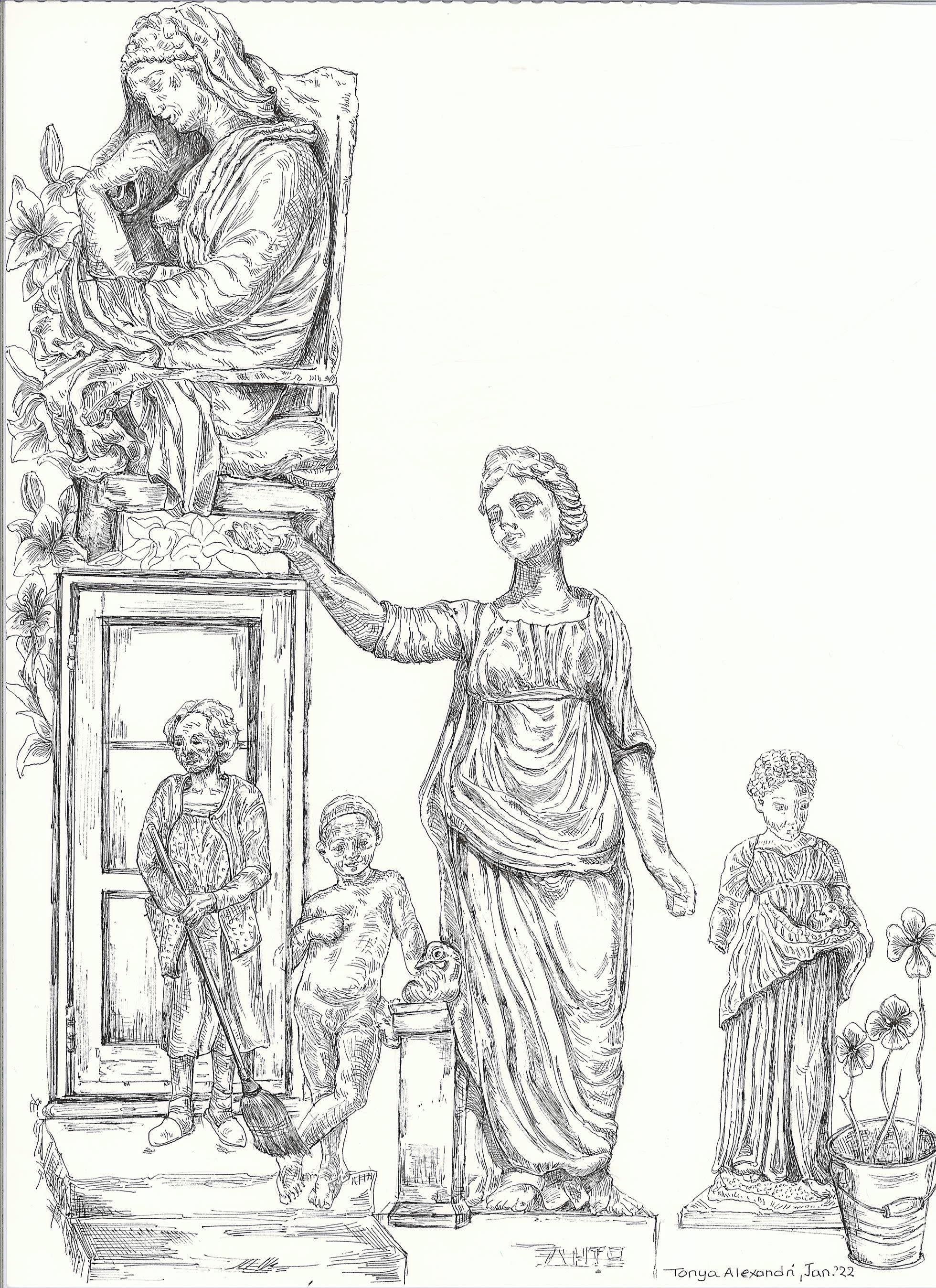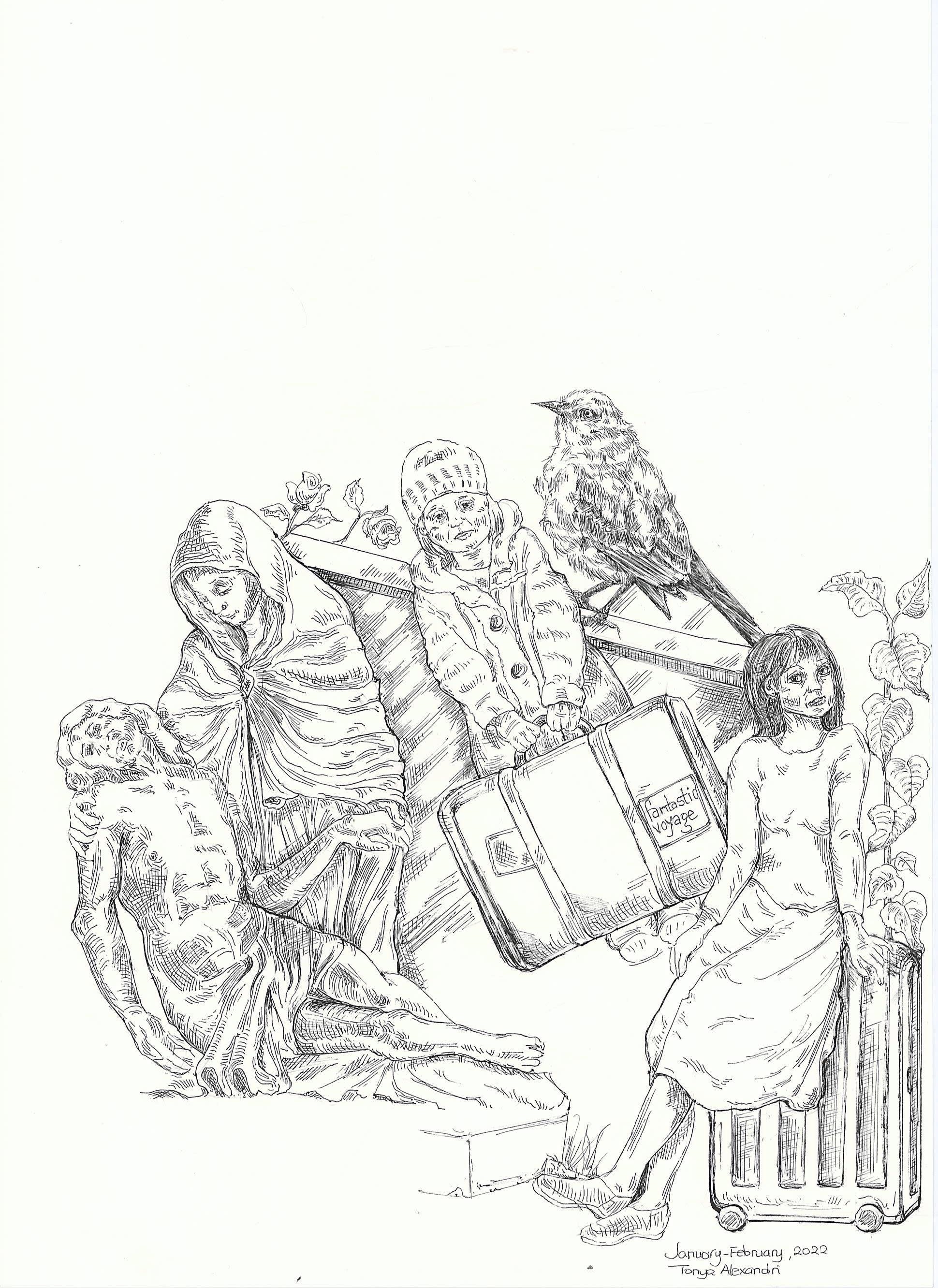Joy
‘The time to be happy is now. The place to be happy is here. The way to be happy is to make others so.’ Robert Ingersoll (1833-1899)
‘It’s not enough to be a happy individual; we should also try to think of ways in which others – perhaps everyone – can be happy.’ Michael Rosen & Annemarie Young
“Growing your inner strengths through taking in the good is like deepening the keel of a sailboat so that it’s less jostled by the worldly winds, it recovers more quickly from big storms, and you can now safely head out into deeper waters in pursuit of your dreams. You’ll be turning moments of hedonic well-being into a more fundamental ongoing sense of fulfillment and meaning: what’s called eudaimonic well-being.” Rick Hanson

Today’s post has to do with joy – how to tap into it and how to cultivate it. I have on and off been looking at relevant material and thinking about writing something around joy and practices of accessing it and cultivating it. Reading James Baraz and Michele Lilyanna’s book, Awakening Joy for Kids, these past two weeks has brought the topic to the forefront again and the result is this first post on joy and contentment. Meanwhile, I’m still working on this recent series of ink drawings. So, I’m accompanying my post with my most recent ones.
From a humanist perspective we should try to create a world in which everyone could have the opportunity to find fulfillment and happiness in the here and now. Of course, there are many different ways to be happy and everyone should have the freedom and opportunity to create the kind of lives that bring them joy and contentment, as long as we respect this right in others and try not to cause harm. Many people around the world do not have the freedom or the basic opportunities to pursue happiness. Actually, I believe freedom is one important contributory factor to our levels of contentment and happiness, but that could be a topic for another post. Finally, there are different ways to define happiness and joy, and each one of us might place emphasis on different experiences and things depending on who we are and where we are in space and time.


In the book mentioned above joy is used to describe healthy states of mind that bring us ease of well-being like contentment, happiness, fulfillment, aliveness, delight, peace, calm, open-heartedness, etc. The authors of the book postulate that cultivating personal joy does not only benefit us, but also, those around us and it produces a ripple effect of bringing more consciousness and well-being to the planet. The book includes many practices designed to strengthen our connections to ourselves and others so that we may live happier and more successful lives. These practices are designed to help children (and adults) develop more self-awareness, empathy, compassion, love and caring for both self and others, and perseverance and resilience in the face of difficulties. I think the book would be great for parents, caregivers, educators, and anyone else working with children. It also includes a guide with instructions on how to integrate these practices into a teaching day while honoring the educational curriculum.
Baraz and Lilyanna have found through their work and experience as school teachers and meditation teachers that the skills that cultivate joy can be taught and that through practice and repetition they can create neural pathways in the brain. They write: “We can wire the brain and our emotional being toward happiness, and in doing so with our children they can become more resilient in the face of an ever-changing world.” They suggest that by practicing these skills early on with our children, we are building emotional resilience, self-regulation, and well-being before they even enter the school system. These capacities facilitate children’s adaption to the school environment, regulation of emotions, learning and engaging with others, and building a loving and respectful classroom community. They refer to research on well-being that shows that increased mindfulness, which is a key component of awakening joy, positively affects all areas of our lives, including intelligence, creativity, productivity, energy, resilience, satisfaction, while decreasing anxiety and depression. In addition, studies have shown that increased happiness strengthens our immune system, lessens pain of chronic disease, combats stress, lowers blood pressure.
The writers discuss how joy is our natural state and that we come into this world with a natural joy. As babies we have access to this if we are taken care of. They write: “A baby who’s been fed, diapered, rested, often squeals with delight at life on receiving some loving attention. We were all that baby at one time. And an adult in an MRI machine who is free of physical or mental stress exhibits a brain that is conscious, calm, creative, caring, and content.” They suggest that we can access and awaken well-being within ourselves even amidst difficulties and stress. It needs to be remembered and we can help children get in touch with that joy by teaching them simple practices and encouraging them to live from that place more and more.
Their three principles to awakening our joy are: understanding where true happiness lies, taking in the good, and practising.
Children might get in touch feeling true well-being, for instance, while playing with friends, being outside in nature on a lovely day, being read a bed time story or snuggling with a pet, and so on. Taking in the good refers to actually pausing to savor the good experience because too often we miss the delight of pleasant moments. We might know cognitively that we feel good but we don’t take the time to feel it in our bodies, to rest there for a few minutes, to savor it. Rick Hanson says we need to a) look for good facts, and turn them into good experiences, b) really enjoy the experience, c) sense that the good experience is sinking into you. He claims that “Every time you [we] take in the sense of feeling safe, satisfied, or connected, you [we] stimulate responsive circuits in your [our] brain…. and with practice, you’ll [we’ll] learn to light up the neural circuits of positive states even when you’re [we’re] rattled or upset, like reaching through clutter to get the tool you [we] need.” You can read more on taking in the good in Rick Hanson’s article at: https://www.rickhanson.net/take-in-the-good/. Finally, as we practice letting our moments of well-being register, instead of being stuck in the ruts of our mind, we start creating happiness grooves because often, according to the neuroscience axiom: “Neurons that fire together, wire together.”
Baraz and Lilyanna claim that the process of awakening joy includes cultivating ten different healthy states of well-being, and being present when they arise so that over time the brain becomes more and more inclined toward happiness. Briefly, these ten healthy states of well being are:
To set the intention to be happy and allow more joy in our lives because this inclines our minds to look for the positive and appreciate joy unfolding
To learn the power of mindfulness and cultivate the capacity to be present and aware, which is a basic tool of a joyful life
To develop a grateful heart because among other things appreciating the good in our lives helps us open to the inevitable difficulties that arise
To learn to be with life challenges in a skillful way
To understand the power of integrity, not doing harm and knowing the joy of being aligned with our values
To cultivate the capacity to let go and learn to restrain ourselves from impulsive behavior that we will later regret
To love ourselves and feel deserving of true happiness
To care and enjoy a healthy connection with others
To express our compassion when we see others around us having a hard time
To know the joy of simply being, where we learn to truly relax and embrace what’s happening right now
There are many, many mindfulness practices and other activities in the book both for doing at home and at school. I will briefly describe two of the school activities that the authors suggest to help children with the first step: to set intentions, which Dan Siegel claims “create an integrated state of priming, a gearing up of our neural system to be in the mode of that specific intention: we can be readying to receive, to sense, to focus, to behave in a certain manner” (cited in Baraz and Lilyanna, 2016).
Children are asked to set an intention around what would bring them a feeling of well-being. They are asked to state, in one or two words, how they are feeling and what they are yearning for. Some children might be yearning for a quiet day and some for a more exuberant experience. The writers suggest that by saying their needs aloud the whole scope and breadth of the human experience can arise and be heard, and also, when students see that others also experience the ebbs and flows of life, they can relax and just be with their feelings. After the intentions are said aloud, the students write one sentence of intention on a strip of sticky notepaper. Sometimes a student might say that their intention is to play video games. Then the child is asked to recognise the need the video game fulfills. If the student says “to compete or to relax” for instance, the teacher helps the child to see that the video game is just a strategy to meet their need and there are many other ways to meet the same need. After writing their need down, the children hold their papers up and move into the middle of the room. Circulating, each student reads aloud another’s paper and says, “You are _____________ and you are inviting _____________ into your life today. I see you and honor your intention.” The other child thanks them and says the same to them. In some sense they learn to respect and honor each others’ needs. They then stick their intentions to their desks and throughout the day look for evidence of them unfolding, and if they can help others to fulfill their need.
This practice can be taken further in an activity called: Co-creating Our Day.
After sharing their intentions, the children write up the needs that they hope to meet during the day on the board. The teacher reminds them that not all needs will be met, but they will do their best to fit them in. Needs for play, rest, sharing, creative time, and outside time are usually part of the list and the teacher can easily work them into the structure of the day. Meanwhile, the children feel empowered and happy that their needs are being honored by the whole class. Throughout the day, the students are asked to share with the group if their intention is unfolding and at the end of the day children can write in their journals how they had a need honored or how they helped someone else with a need or joy. If their need or joy didn’t fit in, they can look for ways to bring it into their evening plans.
